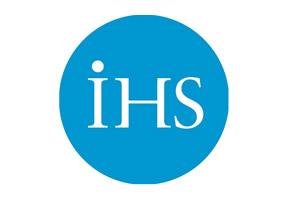Propelled by the arrival of the Apple Watch, the market for wireless power and charging in wearable applications is set to attain a gargantuan 3,000 percent expansion this year compared to 2014, according to IHS Technology.
Global revenue this year from shipments of wireless power receivers and transmitters in wearable applications will surge to more than $480 million, up from just $15 million last year, as shown in the attached figure. By 2019, wireless charging in wearables will generate revenue exceeding $1 billion.
“Growth this year will be remarkable for wireless charging in wearable electronic devices, even if in reality the overall penetration of wireless charging into wearables is relatively low given the billions of wearables that are shipped into the consumer market every year,” said Vicky Yussuff, analyst for wireless charging at IHS Technology. “Still, interest in the use of wireless charging remains high on the part of wearable technology providers and device original equipment manufacturers. As a result, penetration is expected to escalate rapidly over the next five years.”
Apple Watch to spark growth
In particular, 2015 is anticipated to be an important year for wearable electronics with many of the leading consumer electronics suppliers introducing wireless charging in their products, including smartwatches.
The highest-profile example is the Apple Watch. The smartwatch will ship with Apple’s proprietary MagSafe inductive charging solution, and is expected for release by the end of the second quarter this year. While Apple’s announcement at the end of 2014 did not really promote the benefits that wireless charging technology has to offer, the product is still expected to drive some awareness of wireless charging. Of the total number of wireless-charging-enabled receiver devices forecast to be shipped in wearable electronics in 2015, Apple Watch is projected to take a dominant share, accounting for more than 70 percent of total revenue in wireless-charging-enabled wearable devices.
At present, wireless charging solutions typically consist of a pad or mat on which consumers can place an enabled device for charging, without having to connect the device and the pad or mat physically. The enabled device, such as a smartwatch, can be picked up for use and replaced for charging—often termed “drop and charge.” However, advancements are also taking place in wireless charging technology, and even more versatile solutions are emerging offering greater spatial freedom, including wireless charging through surfaces like a desk, support for wireless charging of multiple devices from the same wireless charger and even wireless charging over distances.
Apple’s solution for the Apple Watch, which uses inductive charging, is not a “drop and charge” mechanism, nor does it offer any range of freedom of movement to the user. In essence, the smartwatch is physically tethered to the charger at all times while charging and being held in place by a magnet. But IHS projects that by the end of 2017, shipments of wearable-technology wireless charging receivers that allow charging over distances will overtake inductive or tightly coupled solutions.
These findings are contained in the report, “Wireless Charging in Wearable Technology Report – 2015,” from the Wireless Power Intelligence Service at IHS. The IHS report, now available for service subscribers, includes an analysis of opportunities for wireless charging in wearable electronics across key applications and products with forecasts through 2018.










